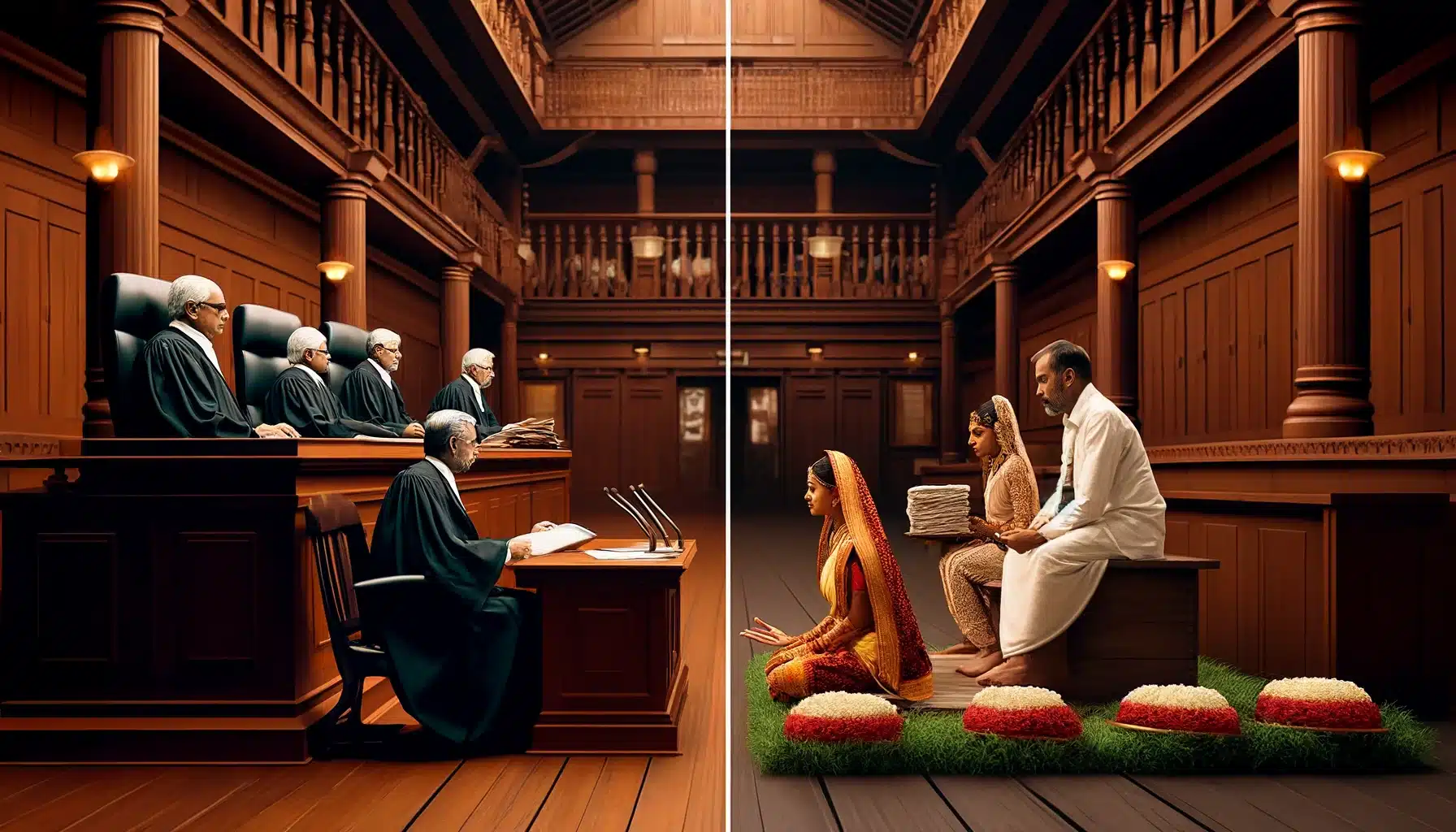In order to prove second marriage legal, the solemnisation of the second marriage should be in proper way of customary rites performed in the second marriage. Customary rites includes two ceremonies namely; invocation before the sacred and the saptapadi.

Citation: AIR 1965 SC 1564
Date of Judgment: 01st February, 1965
Court: Supreme Court of India
Bench: J.R. Mudholkar, Raghubar Dayal and V. Ramaswami, JJ.
Facts
Bhaurao Shankar Lokhande (Appellant No. 1) married to Indubai in the year 1956. During the lifetime of Indubai (first wife), he got married to Kamlabai(Second wife) in the year 1962. Deorao Shankar Lokhande (Appellant No. 2), the brother of the first appellant along with Kamlabai’s father and a barber were present at the time of their marriage.
Decision of the Lower and High Court
Kamlabai, her father and the barber along with both the two appellants were tried for an offence under Sec 494 of IPC. Finally, the Appellant No. 1 was convicted under Section 494, IPC and Appellant No. 2 was convicted under Sec 494 and Sec 114 of IPC (for abetting appellant no.1) and the latter three were acquitted by the Magistrate. Their appeal to the Sessions Judge was dismissed. They filed a revision petition in the High Court which was also dismissed. Hence they made an appeal by special leave before the Supreme Court.
Contentions of the Parties
It is urged by the appellants that the essential ceremonies for a valid marriage were not performed during the proceedings which took place when appellant No. 1 and Kamlabai married each other. It is also urged on behalf of the State that it is not necessary for the commission of the offence under Sec 494 IPC. that the second marriage is a valid one.
Decision of the Supreme Court
The Supreme Court overruled the judgement of High Court and held that since the marriage between appellant no. 1 and Kamlabai performed without certain ceremonies as per the law, that marriage cannot be said to solemnized within the Sec 7 of Hindu Marriage Act, 1955. The court allowed the appeal and set aside the conviction of appellants under sec.494 with sec.114 of IPC.
Key legal issues discussed
1. Whether the second marriage solemnized by the appellant was valid or not?
No
It is alleged for the respondent that the marriage between appellant no. 1 and Kamlabai was in ‘gandharva’ form which means marriage based on mutual attraction between two people, with no rituals, witnesses or family participation.
The Supreme Court states that the prosecution has failed to establish that the marriage between appellant no. 1 and Kamlabai in February 1962 was performed in accordance with the customary rites as required by Sec 7 of the Act[1]. The essential marriage ceremonies are as much a requisite part of this form of marriage. There are two ceremonies essential for a valid marriage, whether the marriage is in any form:
- Invocation before the sacred fire, and saptapadi, that is, the taking of seven steps by the bridegroom and the bride jointly before the sacred fire (as per Hindu Marriage Act, 1955)
- A marriage can be completed by the performance of any other ceremonies as per the custom of the caste to which the parties belong.
2. Whether the appellants are guilty for offence under S. 494 of Indian Penal Code?
No
Sec 494 of IPC, 1860 states that Whoever, having a husband or wife living, marries in any case in which such marriage is void by reason of its taking place during the life of such husband or wife, shall be punished with imprisonment of either description for a term which may extend to seven years, and fine. But, this section does not extend to any person whose marriage with such husband or wife has been declared void by a Court of jurisdiction.
The Supreme Court states that the marriage was certainly not performed in accordance with the essential requirements for a valid marriage under Hindu law. Therefore the marriage between appellant no. 1 and Kamlabai does not come within the expression ‘solemnized marriage’ occurring in the Act and does not come within the Sec 494 of IPC, 1860.
- Hindu Marriage Act, 1955


